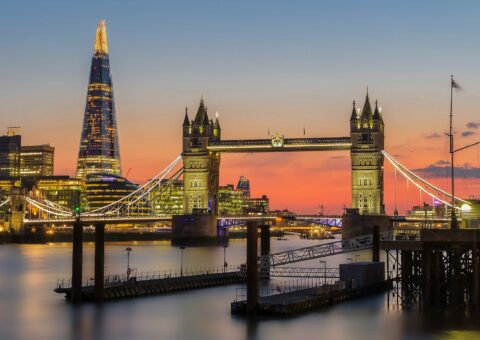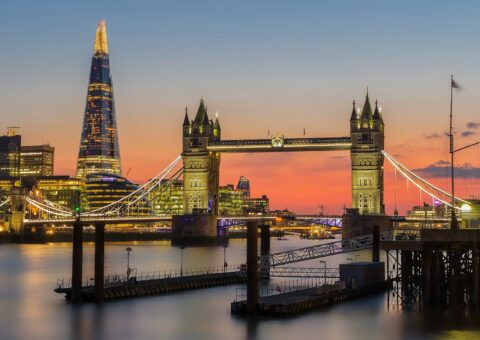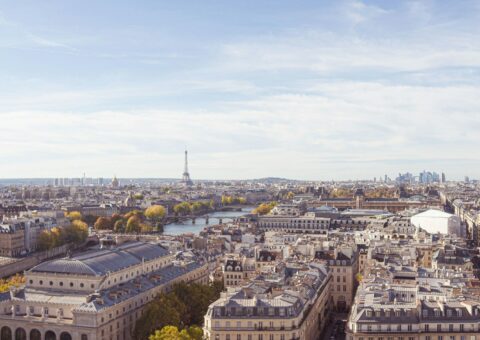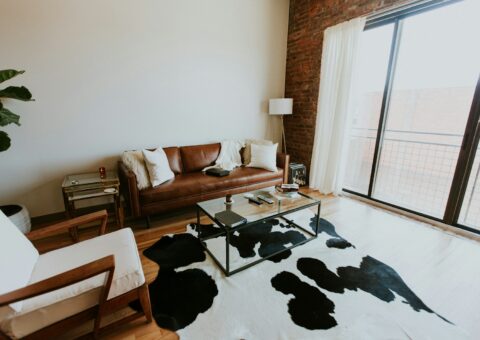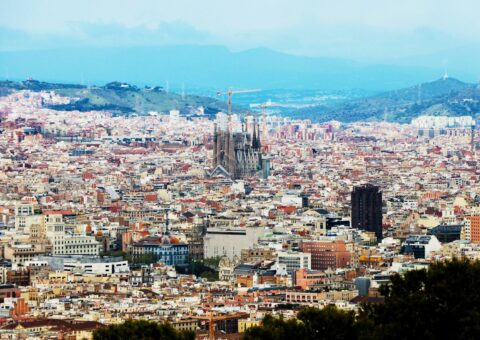The Best Neighborhoods in Paris: Where to Live in the City of Lights
As you probably already know, Paris is a popular place to live:
Home to more than 2.1 million people, it’s France’s most populated city by a long way*.
(*get this: France’s second-biggest city Marseille is home to only 790,000 people!).
… but Paris is also a hugely popular relocation hub, for people from around the planet. Over 20% of the city’s residents were born outside France, and it’s the nation’s most multicultural region by far.
And it’s popular for loads of reasons: Paris is massive, action-packed, full of world-class food and drink, and endlessly exciting. And because many types of people live here, you’ll easily find a community of friends.
But because the city is broken down into 80 different districts (themselves spread inside the 20 different ‘arrondissements’ which Paris is made up of), it’s tough to know which part of the city to live in.
So, which Paris area should you choose? Which neighborhoods are best for which type of people? Is anywhere in Paris good for families? Where can you find the tucked-away affordable areas? And which Paris neighborhoods have the best Paris apartments?
Coming up, all that and more: today, Homelike are taking you on a trip around the best neighborhoods in Paris!
The best arrondissements to live in Paris at a glance
- Île de la Cité: high earners, short-term stays, and exploring the heart of the action
- Opéra: live performances, lively nights, and living the ‘real’ Parisian life
- Champs-Elysées: shopping, safety, mixing tourism with reality, and living in an upmarket district
- Île Saint-Louis: upmarket island life, feeling like you’ve stumbled into a French village, and many cafes and restaurants
- La Villette: hipsters on a budget, quirky events, green spaces, and canalside fun
- Quartier du Gros-Caillou. A tourist neighborhood that manages to retain its community feel.
- Montmarte: artistic heritage, bohemian atmosphere, breathtaking views, and experiencing Parisian history
- Passy: tranquil residential living, family-friendly environment, proximity to parks, and elegant surroundings
- Le Marais: artistic heritage, bohemian atmosphere, breathtaking views, and experiencing Parisian history
- Batignolles-Monceau: family-friendly atmosphere, vibrant local culture, green spaces, and enjoying a mix of modern and historical Parisian charm
- Bastille. An affordable neighborhood with a perfect mix of old and new Paris.
- Menilmontant. Paris’s hippest up-and-coming area, perfect for young professionals.
- Montpartnasse. Lively affordable neighborhood with great street art.
- Les Halles. Popular shopping district smack bang in the middle of the city.
- Saint Germain. One of the city’s most glamorous neighborhoods with expensive accommodation to match.
- Quartier Latin. Vibrant student area with lively streets and affordable housing.
- Oberkampf. Well-connected neighborhood famous for its lively nightlife scene.
- Enclos St Laurent. Quiet and affordable residential area home to one of the city’s major train stations.
- South Pigalle. Lively, trendy neighborhood with plenty of amazing bars and restaurants
Île de la Cité (1st and 4th arrondissements)
Best for: high earners, short-term stays, and exploring the heart of the action
The famous River Seine runs right through the heart of Paris, cutting the middle of the city in two.
… and just east of the Louvre, there’s an island on this river:
This island is known as Île de la Cité (which translates from French into English as ‘City Island’).
Though Île de la Cité is pretty small (around 10 streets long and 5 streets wide), it’s a surprisingly action-packed place. It’s home to both Sainte-Chapelle and Notre-Dame Cathedral, and an impressive 9 bridges. Other perks include a metro station, a big hospital, and a small-but-popular triangular-shaped park.
Obviously, because Île de la Cité is so small, not many people live here—and the homes you will find are expensive.
But if you have a big budget, this is one of the best neighborhoods to live in Paris:
It’s super safe and scenic, you’ll find pretty waterside homes, and you’re surrounded by some of the most famous and best arrondissements in Paris.
All that said, it’s best-suited for you if you’re here for a limited period and are looking for to short term rentals in Paris… and because you won’t find many families or much community spirit here, we recommend it for couples and singles.

Opéra (9th and 2nd arrondissements)
Best for: live performances, lively nights, and living the ‘real’ Parisian life
Very close to Les Halles, Opéra is quite similar to its nearby neighbor.
… but while Les Halles is most well-known for shopping, Opéra is more well-known for—as you might have guessed!—live performances:
Dominating the heart of the district, the hefty and ornate Palais Garnier is one of the city’s most iconic performance spaces. A 19th-century opera house, it’s most famous for its super-intricate painted ceiling.
… while some of Opéra’s other performance venues include L’Olympia (serving up crowd-pleasing comedy and rock), La Pépinière Théâtre (small alternative shows in an intimate and atmospheric setting), and Théâtre Edouard VII (with a history of famous names spanning over 100 years).
In Opéra, you’ll also find many offices, and bank and business headquarters (so if you’re looking for a job, this is one of the best neighborhoods to live in Paris)…
… while other perks of the neighborhood include tucked-away shopping passages, many artisan bakeries and cafes, lots of boutique stories, and a bunch of small-but-popular cabaret bars and jazz clubs.
Overall, if you like shopping, shows, and high-life thrills, this is one of the best neighborhoods in Paris.
Champs-Elysées (8th arrondissement)
Best for: shopping, safety, mixing tourism with reality, and living in an upmarket district
You’ve heard of the Champs-Élysées:
The southern section of the busy 8th arrondissement, it’s famous for boutique shopping, many big monuments, and being repeatedly mentioned in that famous song.
On the shopping streets here, you’ll find many luxury names and independent high-price boutiques (along with more mundane offerings, like Nike, Zara, and other chains).
Both a street and a neighborhood (though the neighborhood is of course bigger than the street!), the Champs-Élysées is one of the most chic, central, elegant and upmarket areas of the city. It’s also one of the safest parts of Paris, while other perks of living here include:
- Pretty riverside stretches: including the green and serene Promenade du Cours La Reine
- High end nightclubs, and tiny local-favorite cafes that transform into bustling bars
- Many famous tourist attractions: including the Jardin des Champs-Élysées and the Place de la Concorde at the neighborhood’s southeastern side, and the Arc de Triomphe at the neighborhood’s northwestern side.
But, importantly: although the Champs-Elysées is super-touristy, it also retains a very local feel (especially in the eastern side of the district). So if you want to mix local vibes with touristy ones, this is one of the best neighborhoods to live in Paris.
Because the Champs-Elysées is such a popular place to live, it can be tough to find a home here. So: many newcomers who want to live here make the sensible and simple decision to move into a furnished apartment in this part of Paris.
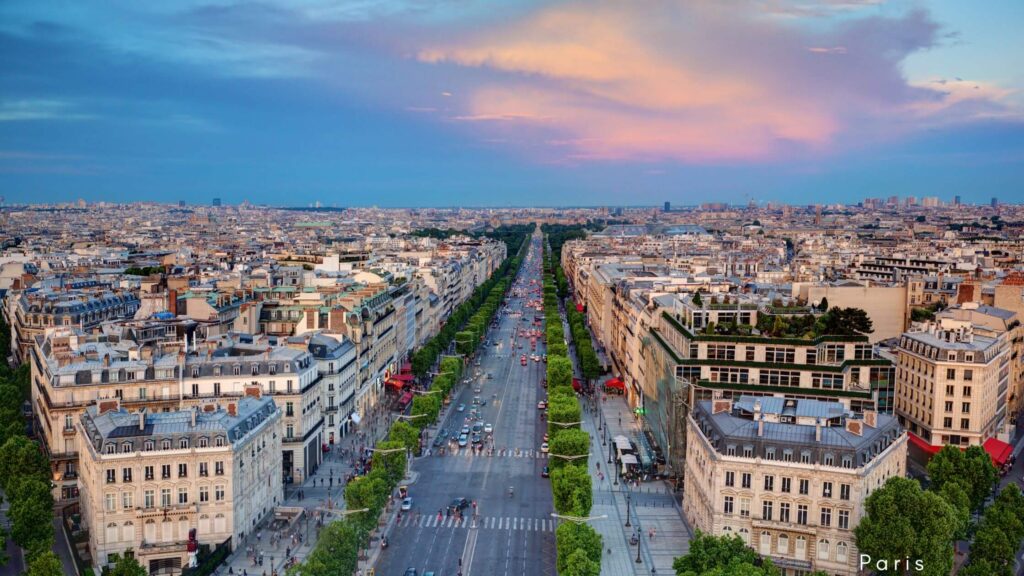
Île Saint-Louis (4th arrondissement)
Best for: upmarket island life, feeling like you’ve stumbled into a French village, and many cafes and restaurants
Another island!
(… and this one’s even smaller, measuring in at around 60% of the size of neighboring Île de la Cité).
Île Saint-Louis sits just east of Île de la Cité: the two are connected by the short-but-beautiful Saint-Louis Bridge (measuring only around 50 meters/164 feet).
But although the two islands are only a 1-minute walk from each other, they’re not very similar:
Île Saint-Louis feels like someone took a quaint and quiet traditional French village, and plopped it into the middle of the Seine. Architecturally, it’s elegant and uniform—the island is mainly made up of many tall and upmarket cream-colored townhouses.
Apart from all the homes (and you’ll find a surprisingly-large number of them here!), the island also offers many boutiques and bars, and a huge number of restaurants and cafes (including the mega-famous wood-covered ice-cream-serving Berthillon). If you like on-street munching and sipping, this is one of the best neighborhoods in Paris.
Much like Île de la Cité, Île Saint-Louis is a pricey place to live, and we only recommend it for people on a big budget. But because Île Saint-Louis isn’t so busy or touristy (and because there are more homes here), Île Saint-Louis is suitable for families.
Overall, if you want to live close to the best arrondissements in Paris without feeling like a tourist, Île Saint-Louis is one of the best neighborhoods in Paris.
Top tip though: many people want to live here (probably for the same reasons you do!). And finding an Île Saint-Louis home can be tricky—so we recommend the stress-free solution of looking for Paris serviced apartments here instead.
La Villette (19th arrondissement)
Best for: hipsters on a budget, quirky events, green spaces, and canalside fun
Around 2 miles (3.2km) east of South Pigalle, you’ll find La Villette.
In some ways, La Villette is like a lesser-known version of its nearby neighbor:
Another nightlife hub, La Villette is rapidly becoming more popular… and it’s an excellent spot for edgy bars, happening green spaces, and unique and interesting music events.
The neighborhood is home to (and named after!) Villette Park, one of the biggest parks in Paris. Here, you’ll find a cinema, lots of live music, pop-up food, and a bunch of summertime festivals. If you like regular events and ever-changing fun, La Villette is one of the best neighborhoods to live in Paris.
You’ll also find a bunch of canalside fun here. La Villette is home to stretches of all three(!) of Paris’ canals (Ourcq, Saint-Martin and Saint-Denis). In this area, you’ll find many great spots for waterside munching and sipping, and the family-friendly Le Bassin de la Villette (a canal basin with three swimming pools and plenty more action and adventure).
Some of La Villette’s most popular nightlife hubs are Le 61 (a tiny tapas bar with live music and popular cocktails), TDTF Paris (intentionally-grungy, and great for meeting new people), and Kermes (sitting inside La Villette park, and home to a sunny terrace).
The neighborhood is probably best summed up by The Centquatre, an arts center sitting inside the district. Previously both an abattoir and a funeral parlor, this once-grim-but-now-inspiring venue has been transformed into a gigantic multi-faceted funfest. In it, you’ll find hipsters of all ages, enjoying concerts, exhibitions, dance classes, expositions, pop-up events, readings, rap battles, family events, parties, and plenty more.
Quartier du Gros-Caillou (7th arrondissement)
Best for: stunning views of the Eiffel Tower, charming streets, cultural landmarks, and a refined atmosphere
There’s no neighborhood more iconic than Quartier du Gros-Caillou, home to the Eiffel Tower and the Champs de Mars. Alongside these famous landmarks, this tourist-centric arrondissement is peppered with fantastic museums and world-famous art galleries.
Away from the touristic side of Quartier du Gros-Caillou, there’s a well-established community that lives here too. As you’d expect in such a popular location, accommodation doesn’t come cheaply, but it does come served with a side of luxury, ultra-convenience, and safety.
The neighborhood is home to around 21600 inhabitants, who enjoy comfortable incomes and have an average age of 40-45 years. This demographic provides an exciting mix of youthful energy and mature sophistication It’s the kind of place where everyone seems to know each other, adding an intimate touch to this district.
While the cultural attractions are a definite plus for families hoping to settle down in Quartier Gros-Caillou, the many schools, parks, and excellent public transport in the area make it that bit more desirable amongst families. That’s not to mention the locally-run boulangeries, greengrocers, and fromageries that keep the community fed and happy.
Another big draw of living in Gros-Caillou is its central location. It’s sandwiched between the iconic Eiffel Tower and Les Invalides, making it an ideal spot for those who want to be close to some of the city’s major landmarks. Plus, the Seine River is just a stone’s throw away, perfect for those evening walks or morning jogs.
The neighborhood itself is peaceful and quiet, providing a respite from the bustling city life. It’s dotted with quaint cafes, artisan bakeries, and small boutiques, offering a truly local Parisian experience. And let’s not forget about the Rue Cler, one of the best market streets in Paris.
As for the cost of living, well, it’s Paris, so it’s a bit on the higher side. The average monthly rent for an unfurnished two-bedroom apartment in Gros-Caillou is around €2,500. But given its prime location and the quality of life it offers, many find it worth every penny.
Montmarte (18th arrondissement)
Best for: artistic heritage, bohemian atmosphere, breathtaking views, and experiencing Parisian history
Monmartre may be a little way from Paris’s geographical center, but many consider this to be the heart of Parisian culture. Its streets still have their original cobblestones set in place, and its stone houses are decorated with sprawling ivy, both emanating the bohemian culture of this charming arrondissement.
The moment you step into Montmartre, you’ll feel like you’ve entered a different world. It’s far from the typical Parisian city life. Here, narrow, winding streets lead to hidden squares filled with quaint cafes and shops. The district has a vibe, reminiscent of its past when it was a haven for artists like Picasso and Van Gogh.
Living in Montmartre means waking up to breathtaking views every day. The neighborhood is famous for its panoramic vistas of Paris – just head to the Sacré-Cœur Basilica’s steps, and you’ll see what we mean. It’s a sight that never fails to inspire, no matter how long you’ve lived there.
The neighborhood’s creative roots date back to the early 19th century when artists like Van Gogh and Picasso called these streets their home. To this day, many creatives still live here, and it has become a must-see destination for visitors to Paris.
The majority of tourists stick to the southern regions of Montmarte, home to the famous Sacre Coeur and stunning views out over the city. This leaves the northern portion of the arrondissement open for residents looking for a place to live with a village-atmosphere, quiet streets, and affordable housing.
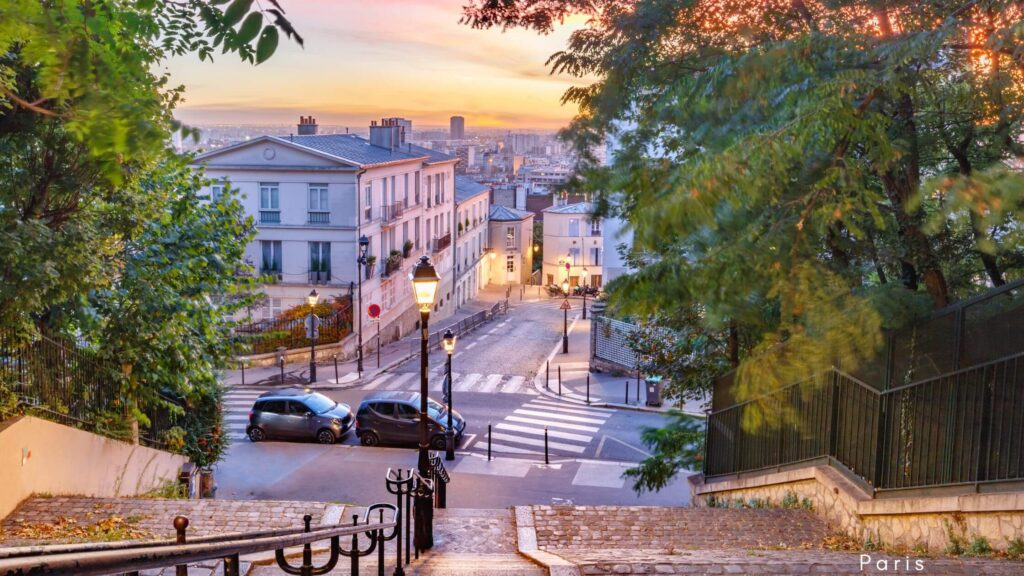
Passy (16th arrondissement)
Best for: tranquil residential living, family-friendly environment, proximity to parks, and elegant surroundings
If you’re drawn to the city’s typical Haussman style apartments and homes, then consider setting up your home in the arrondissement of Passy. Its quiet and safe streets and ample green areas make this area of Western Paris one of the best places to live in Paris and extremely popular amongst families. Expat families, to be more specific.
Passy, once a village and now a residential neighborhood, is a breath of fresh air from the typical hustle and bustle of Paris. It’s quieter, more laid-back, and it has a charm that’s all its own with tree-lined streets, beautiful old mansions, and independent boutiques that make window shopping an absolute joy.
Expat families with children love this area thanks to its highly-regarded international schools. To add to this, Passy has one of the city’s largest green spaces, known as Bois de Boulogne, an ideal place to exercise or grab an extra hour of sunshine during the summer months.
All this luxury does come at a price. The 16th arrondissement is actually one of the priciest districts in Paris. But there’s plenty to keep you busy in Passy, beyond the residential streets. You’ll find hidden alleys leading to lively high streets with a mix of French and international cuisine. Plus, the Jardins du Trocadéro and Palais de Chaillot are just a stone’s throw away, offering amazing views of the city.
Le Marais (4th arrondissement)
Best for: historical architecture, trendy boutiques, vibrant LGBTQ+ scene, and cultural richness
If you love being able to walk everywhere from your apartment, then living in Le Marais might just be your perfect match. Straddling the 3rd and 4th arrondissement, Paris neighborhoods don’t get much more central than this. With the River Seine just a stone’s throw away and the world-renowned Louvre museum within a 30-minute walk, Le Marais stands as one of the most sought-after places to live in Paris.
Post-French-revolution, Napoleon widened many of Paris’ streets to prevent further barricades. Not in Le Marais, though. This historic neighborhood still has many of its narrow streets intact, bringing a medieval charm to the whole place, including to its apartments housed in the neighborhood’s historic buildings.
The area itself is known as one of Paris’ most stylish districts, full to the brim with independent eateries, late-night art galleries, and shopping boutiques. You can spend your days taking in the cultural sights, enjoying long walks along the River Seine, or hunting around the hidden alleys for some great shopping. During the evening, Le Marais’ streets are lively. Lined with bars and nightclubs, there’s not a night that goes by without something going on.
Now, let’s talk about your future neighbors. The Marais is a melting pot of different cultures and lifestyles, making it an exciting place to live. It’s known for its vibrant LGBTQ+ scene, its Jewish heritage, and its ever-growing artsy crowd. The variety of people you’ll meet here is part of what makes this neighborhood so special.
And when it comes to shopping, the Marais is a dream come true. Forget big-name brands; we’re talking unique boutiques filled with vintage finds and local creations. And food? Oh, the food! From mouth-watering street food to Michelin-starred restaurants, the Marais has got your taste buds covered.
But living in one of the best neighborhoods in Paris doesn’t come cheap. Expect to pay around €2,000 per month for a studio apartment. But for the chance to live in a place where every day feels like a new adventure, it’s worth every centime.
One of the delightful highlights of Le Marais is the Marché des Enfants Rouges. Established in 1615, it holds the title of being the oldest covered market in Paris. Located near the rue de Bretagne, this market was originally built at the request of Louis XIII and used to be a supply hub for poultry, game, and other food items.
Today, it’s a heaven for food lovers. Open six days a week, the market is always teeming with locals and tourists alike, all eager to sample the various culinary delights on offer.
Another interesting fact about Marais is that Victor Hugo, the famous French writer, lived in the Marais neighborhood of Paris for over 16 years. He moved into a grand apartment on Place des Vosges in 1832 with his wife and children.
During his time in the Marais, Hugo wrote several of his most famous works including “Les Misérables” and “The Hunchback of Notre-Dame”. He was also politically active during this period and used his writing to advocate for social justice and political reform.
Hugo’s apartment on Place des Vosges has been preserved as a museum dedicated to his life and work. Visitors can see the desk where he wrote some of his most famous novels and explore rooms filled with memorabilia from his personal life.
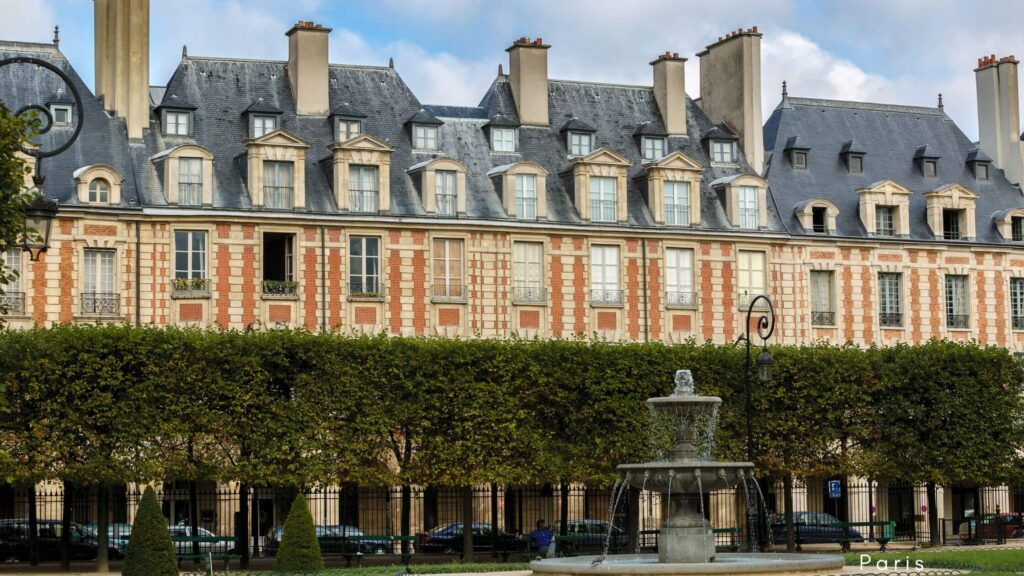
Batignolles-Monceau (17th arrondissement)
Best for: family-friendly atmosphere, vibrant local culture, green spaces, and enjoying a mix of modern and historical Parisian charm
If you’re looking for a trendy and up-and-coming neighborhood in Paris, Batignolles Monceau is the perfect spot. This area is known for its stylish boutiques, hip cafes, and vibrant nightlife.
One of the most appealing factors of Batignolles-Monceau is that it has a little something for everyone. The arrondissement is home to some of Paris’ most expensive and most affordable accommodation, catering to any budget that you might have.
For those of you who prefer the finer things in life, the mini-neighborhood of Batignolles is one of the most charming areas in the whole city. Arranged around a leafy square, securing an apartment here is difficult, but when you do, you’ll be within walking distance of some of the city’s best bilingual schools, green spaces, and excellent shopping streets.
Home to approximately 167000 residents, this district is anything but ordinary. It’s a place where you can find some of the largest private mansions per square meter in Paris.
The neighborhood isn’t just about its impressive buildings and beautiful architecture; it’s also about the people who live there. It has a friendly and local vibe. The area is home to a mix of families, professionals, and creatives. Despite being an upscale area, the local community still thrives. Family-operated markets, bakeries, and restaurants here are consistently bustling with customers, regardless of the time of day.
Batignolles Monceau also has lots of green areas like Parc Monceau and Square des Batignolles. These parks are great for escaping the busy city life, perfect for picnics or leisurely walks in the afternoon.
In addition to the nature, shopping and dining options, Batignolles Monceau is also home to several museums such as Musée Cernuschi and Musée Nissim de Camondo. So if you’re a culture vulture looking for your next fix, this neighborhood has got you covered!
Bastille (11th arrondissement)
Best for: nightlife, diverse dining options, cultural experiences, and historical significance
If you’re looking for a neighborhood with a rich history and plenty of character, Bastille is the perfect spot. This area was once home to the infamous Bastille prison, which played a pivotal role in the French Revolution.
But don’t worry – these days, Bastille is known more for its lively atmosphere and trendy vibe. The neighborhood is filled with hip cafes, bars, and restaurants that cater to all tastes and budgets.
Tucked away on the River Seine’s right bank, Bastille is historically recognized as the city’s most working-class area. However, in recent years, affordable housing has given rise to a new wave of gentrification in the neighborhood.
Now, Bastille harbors a fantastic balance of old and new. Traditional stone housing sits next to modernized apartments complete with colorful veneers. Locally-run grocery stores and generations-old bakeries are just moments away from large chain stores. Fragrant Moroccan spice stores sit just across the street from modern supermarkets. The best bit? Everything manages to thrive here.
With such a huge array of things to see and do in Bastille, it’s a neighborhood that you will never get bored of.
But it’s not just about the entertainment – Bastille also offers plenty of green spaces like Promenade Plantée and Coulée Verte René-Dumont. These parks provide a peaceful escape from the busy city life, perfect for picnics or leisurely afternoon walks.
Just a 15-minute walk away is the Père Lachaise cemetery, a serene oasis in the middle of the city. This famous cemetery is the final resting place of many notable figures, including Oscar Wilde and Jim Morrison, and is a popular spot for quiet reflection.With an average monthly rent of around €2,000 for an unfurnished two-bedroom apartment, it’s a relatively affordable option in the heart of Paris.
And don’t forget the nightlife! Bastille offers a variety of options, from techno clubs to jazz bars. If dancing isn’t your style, you can also enjoy a laid-back evening at one of the theaters or cinemas in the area.
And if you need to get around town, Bastille has excellent transport links via metro lines 1, 5, and 8. So whether you’re commuting to work or exploring new parts of Paris, getting around couldn’t be easier!
Menilmontant (20th arrondissement)
Best for: artistic vibe, multicultural atmosphere, affordable living, and alternative cultural experiences
Like many neighborhoods on Paris’ eastern side, Menilmontant started its life as a hamlet just outside of the city’s borders. Over time, the sprawling city grew to include Menilmontant as one of its 20 arrondissements. Primarily recognized as a working-class and bohemian neighborhood, Menilmontant is starting to rise from the ashes as one of the hippest neighborhoods in town.
Still a fair way from its prime, Menilmontant offers up affordable housing with a vibrant atmosphere to compliment it. Today, the neighborhood is full to the brim with independent coffee shops, family-run bakeries, and speakeasy bars that are worth the struggle to find.
Menilmontant also has an emerging street art scene, with old buildings transformed by local artists into artwork that breathes life into the neighborhood’s walls. Couple this with a multi-cultural and creative community, affordable housing, and easy transportation into the city center, and you’ll soon realize why this neighborhood is the talk of the town.
Montparnasse (14th arrondissement)
Best for: literary heritage, vibrant café culture, modern architecture, and convenient transport links
If you’re looking for a neighborhood in Paris that has it all, look no further than Montparnasse. This lively area is located in the 14th arrondissement and is known for its bustling streets, great restaurants, and lively nightlife.
One of the biggest draws of Montparnasse is its central location. It’s just a short metro ride away from many of Paris’ top attractions, including the Eiffel Tower and Notre-Dame Cathedral. Plus, it’s close to several major train stations, making it easy to explore other parts of France or even other countries.
But what really sets Montparnasse apart is its affordability. While some neighborhoods in Paris can be quite expensive, Montparnasse offers a more affordable living option without sacrificing any amenities. There are plenty of reasonably priced apartments available for rent or purchase, as well as a variety of shops and markets where you can find everything you need at reasonable prices.
Of course, there’s also plenty to do in Montparnasse itself. The area is home to several cinemas and theaters, as well as a number of museums and galleries. And when it comes to dining options, you’ll never run out of choices – from traditional French bistros to international cuisine from around the world.
All in all, if you’re looking for an affordable yet lively place to call home in Paris, Montparnasse should definitely be on your list.
Les Halles (1st arrondissement)
Best for: shopping and dining, central location, cultural attractions, and urban transformation
Named after the old market district of Paris, Les Halles is primarily known as a shopping district. Nowadays, the neighborhood offers up limited residential space for those who are willing to spend the money. Yes, renting doesn’t come cheaply here. But, it does come with a fantastically central location with enough entertainment to last you the year.
Les Halles seems to be continuously undergoing some sort of revamping and regeneration. Whether that be the Westfield Forum des Halles, a huge shopping complex complete with a 30-cinema multiplex and an indoor swimming pool, or the pedestrianization of its many shopping streets, it won’t be long until this is the contemporary center of the city.
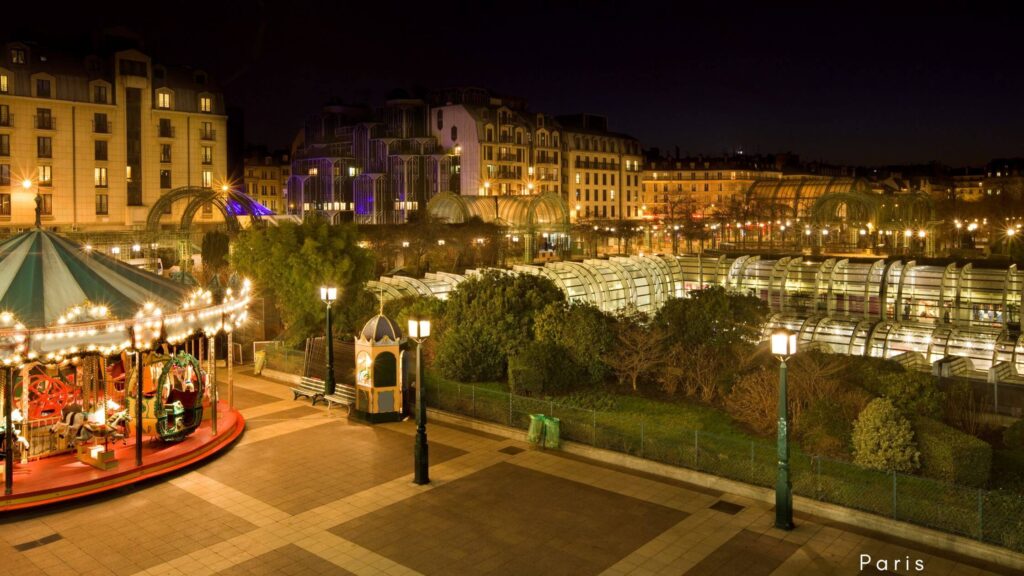
St-Germain-des-Pres (6th arrondissement)
Best for: intellectual heritage, chic boutiques, historic cafes, and artistic ambiance
When it comes to the creme de la creme of Parisian living, you simply cannot overlook St-Germain-des-Pres. This neighborhood has blossomed from a somewhat shabby area into one of the most sought-after spots in the City of Lights. Imagine stepping out of your front door to be greeted by an array of high-end boutiques, chic eateries, and enchanting independent art galleries. It’s no small wonder why Saint Germain is often touted as the best area to live in Paris!
The residences in Saint Germain are nothing short of spectacular. Sure, they might be a bit pricier than other parts of the city, but trust us, they’re worth every euro. The expansive, pre-Haussmannian apartments, adorned with rustic exposed beams and picturesque bay windows, offer a taste of luxury that’s quintessentially Parisian. It’s like living in your own little palace amidst the hustle and bustle of the city.
And let’s not forget about the Jardin du Luxembourg! This lush oasis is the ideal spot for those lazy summer picnics or leisurely strolls. Plus, with so many fantastic dining options right at your doorstep, you’ll never run out of places to satisfy your palate.
But there’s more to Saint Germain than just shopping and dining. The neighborhood is steeped in a rich history and culture that adds to its charm. From the iconic Eglise de Saint-Germain-des-Pres, the oldest church in Paris, to the famed Cafe de Flore and Les Deux Magots, frequented by literary and artistic legends like Ernest Hemingway and Pablo Picasso, there’s always something intriguing to discover here.
Saint Germain also boasts of a vibrant nightlife scene, with a variety of bars and jazz clubs, such as the legendary Le Caveau de la Huchette. Here, you can dance the night away to live music in a medieval cellar! And, if you’re in the mood for a quieter evening, the Seine River is just a stone’s throw away – perfect for a romantic moonlit walk.
In essence, living in Saint Germain gives you the best of both worlds – the allure of the upscale and the charm of the bohemian. With its mix of luxury and culture, it’s no wonder why this neighborhood is considered the ultimate Parisian paradise!
Quartier Latin (5th arrondissement)
Best for: academic atmosphere, historical landmarks, vibrant nightlife, and eclectic dining
Home to the famous Sorbonne University, the Latin Quarter is known as the city’s student area. Its narrow streets and historic buildings offer up a mixture of affordable eateries, student bars, and locally-run shops, giving it the air of an old university town.
Despite being known as the student area, many young professionals also like to call this area their home. While most students tend to stick to the busier and 24-hour streets of St Michel, those looking for a break from the vibrant streets often gravitate towards Jardin des Plantes.
Unlike many other neighborhoods in Paris, Quartier Latin didn’t undergo the renovations in the late 19th century, and as such, has managed to retain its medieval architecture. Apartments here are full of character and old charm, perfect for the dreamers amongst us.
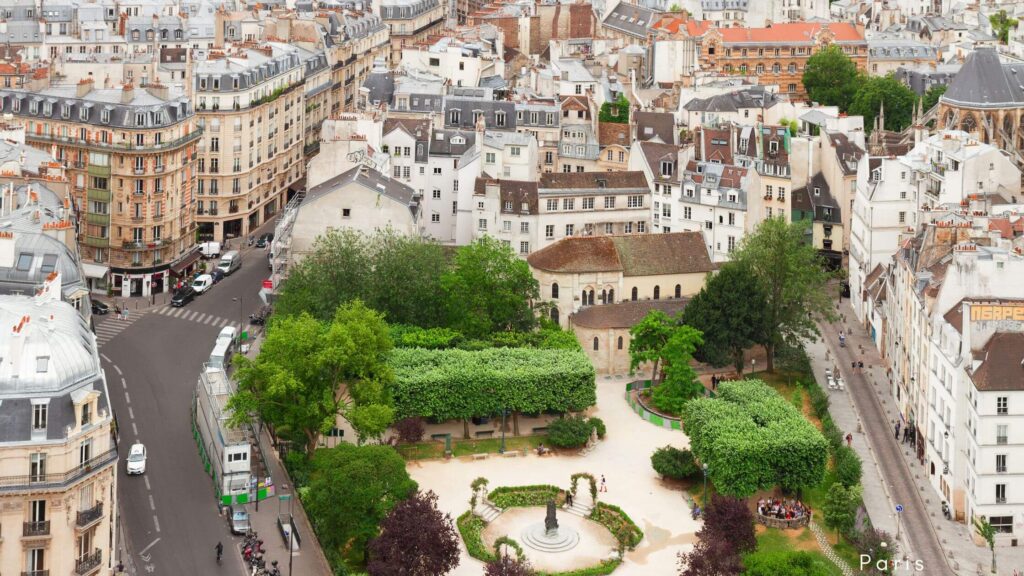
Oberkampf (11th arrondissement)
Best for: nightlife, artistic spirit, diverse dining, and youthful energy
Popular amongst young people and party goers, Oberkampf is one of Paris’ most underrated arrondissements. Not only does the neighborhood have fantastic connections to the rest of the city and the center, but this is the place to visit if you’re looking for a place to party not far from home.
While Oberkampf may be famous for its huge choice of lively nightclubs, and quirky bars, there is a quieter side to the neighborhood too. This arrondissement offers up an authentic glimpse into everyday life in Paris. Its community is multicultural, and there’s no one-size-fits type of resident for Oberkampf.
St Laurent (10th arrondissement)
Best for: multicultural vibe, trendy cafes, vibrant nightlife, and convenient transport links
If the lively neighborhood of Oberkampf seems just a little too overwhelming, jump across a few streets to the neighboring Enclos St Laurent. Sitting in the 10th arrondissement, you won’t be too far from the affordable nightclubs and bars for a good night out, but you’ll also benefit from the quiet and residential streets of Saint Laurent.
The Canal Saint-Martin runs right through the middle of the neighborhood, parts of which are lined with charming residential properties, other bits where you can grab an alfresco coffee or pastry. Gentrification is yet to hit this part of the city, which is why you’ll find reasonably priced apartments and housing both to rent and to buy.
South Pigalle (9th arrondissement)
Best for: trendy nightlife, artistic flair, boutique shopping, and bohemian charm
If you’re looking for a lively and trendy neighborhood in Paris, South Pigalle is definitely worth checking out. Located in the 9th arrondissement, this area has become increasingly popular among young professionals and creatives over the past few years.
One of the main reasons why South Pigalle is such a great place to live is its vibrant nightlife scene. From beer bars like le Bar Fondamentale to cocktail bars like L’entrée des artistes that serve up unique cocktails, there’s always something going on here after dark. Plus, with its proximity to Montmartre and other tourist hotspots, you’ll never run out of places to explore.
But it’s not just about partying in South Pigalle – there are plenty of other perks too. For example, the food scene here is amazing. Whether you’re in the mood for traditional French cuisine or international flavors, you’ll find plenty of options within walking distance. Some of my personal favorites include Frenchie (for fancy dinners), and La Cantine de la Cigale (for casual lunches).
Another thing we love about South Pigalle is its sense of community. Despite being a bustling urban area, there’s still a strong neighborhood vibe here. You’ll often see locals chatting outside cafes or browsing through the boutiques along Rue des Martyrs. And if you’re looking to meet new people, there are plenty of events and workshops happening all year round.
Overall, we think South Pigalle has everything you could want in a Parisian neighborhood – great food, exciting nightlife, and a friendly atmosphere. So if you’re thinking about moving to Paris (or just visiting!), be sure to put this area on your list!
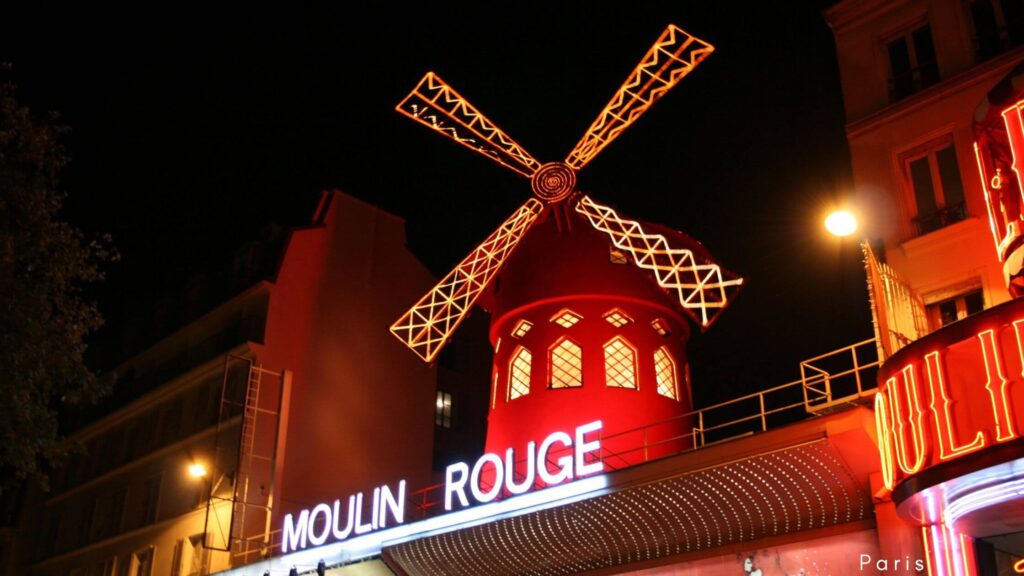
Best Suburbs to Live Near Paris
Versailles
Distance from Central Paris: Approximately 17 km
Home to the famous Palace of Versailles, this suburb offers a taste of French history and culture. With its stunning gardens and ornate architecture, it’s no wonder that so many people flock here every year. But Versailles is more than just a tourist destination – it’s also a great place to live. The town has a charming small-town feel, with plenty of shops and restaurants to explore.
Saint Germain en Laye
Distance from Central Paris: Approximately 19 km
Located just outside the city limits, Saint Germain en Laye is known for its picturesque streets and beautiful chateau. This suburb has a thriving arts scene as well as plenty of green space, making it an ideal spot for those who want easy access to both nature and culture.
Chatou
Distance from Central Paris: Approximately 16 km
Nestled along the banks of the Seine River, Chatou is a peaceful suburb that feels worlds away from the hustle and bustle of Paris. It’s home to several museums and galleries as well as some excellent restaurants. But what really sets Chatou apart is its natural beauty – there are several parks and gardens where you can relax and enjoy the scenery.
Saint Denis
Distance from Central Paris: Approximately 10 km
Located just north of Paris, Saint Denis is known for its rich history and cultural heritage. It’s home to several important landmarks such as the Basilica of Saint Denis, which contains the tombs of many French kings and queens. Despite its proximity to central Paris, Saint Denis has managed to maintain its unique character over the years.
All in all, these suburbs offer a great alternative to city living while still being close enough to enjoy all that Paris has to offer.
How to find accommodation in Paris
Rental Accommodation
Renting is a great choice if you’re planning a temporary stay or if you simply want to get a feel for different Parisian neighborhoods before making a long-term commitment.
Homelike should be your first port of call. Our platform specializes in providing fully furnished and serviced apartments as well as coliving spaces in Paris, perfect for both short-term and long-term stays. We cater to various needs, whether you’re a solo traveler needing a compact space or a family requiring a larger property.
Other options include Lodgis and Paris Attitude.
For those who are new to Paris, we have put together a guide with tips on finding an apartment for rent in Paris.
Buying Property
If you’re ready to take the plunge and invest in your very own piece of Paris, there are several reliable platforms to help you find your dream home.
PAP fr is a popular property portal among locals. It stands for ‘Particulier à Particulier’, meaning ‘from private to private’, and it allows owners to sell or rent their properties directly, eliminating agency fees.
Century 21 is a well-established real estate agency with a strong presence in Paris. They have a wide range of properties listed, from charming old apartments in historic buildings to modern penthouses with stunning city views.
Lastly, Barnes International Realty is renowned for its luxury properties. If you’re looking for an upscale apartment or a prestigious townhouse, this is the place to go.
Finding the right place can take time, so start early and don’t rush the process. Bonne chance (good luck)!
FAQs about Paris neighborhoods and arrondissements
What are the safest areas in Paris?
Paris is generally considered a safe city. The Latin Quarter, Champs Elysées, Le Marais, St Germain, and Châtelet are among the safest areas to stay in Paris. Residential areas like the 14th, 15th, and 13th arrondissements are also considered safe.
Which neighborhoods in Paris are pet-friendly?
The 12th Arrondissement, with its access to the Bois de Vincennes, is a great area for dog owners. Also, Montmartre, with several parks and open spaces, is another pet-friendly neighborhood.
Why is it hard to find green spaces for pets in central Parisian neighborhoods?
Central Paris is densely populated with high concentration of historical buildings, monuments, shops, and cafes. Therefore, green spaces such as parks or gardens are limited and can be crowded, making it difficult for pets to roam freely.
Are there any neighborhoods in Paris that are particularly quiet?
The 7th Arrondissement is known for its peaceful ambiance, thanks to the large number of governmental and administrative offices located there.
Where should I stay in Paris for easy access to famous landmarks?
The 1st Arrondissement is centrally located and close to several famous landmarks like the Louvre and Palais Royal.
Which Paris neighborhoods are known for their nightlife?
The Bastille area in the 11th Arrondissement, and Pigalle in the 9th Arrondissement are known for their vibrant nightlife with numerous bars, clubs, and live music venues.

